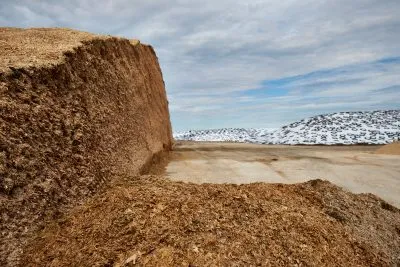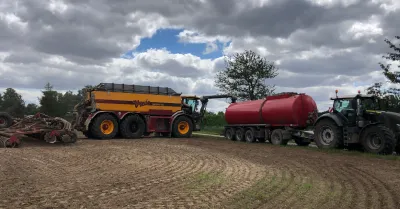There are several things to consider when planning your pile, and they extend far beyond simply deciding the size and location (although those need to be meticulously planned, too). You must plan for your equipment: What equipment will you need? Will your equipment handle the size you’re looking to build? But also, you must plan for safety. Who will be interacting with the pile? How will they all be aware of safety protocols?
When planning your pile, there are lots of questions to consider. Luckily, we’re here with answers for how to take a small load off your future work through proper pile planning.
When physically building your pile, plan to follow these guidelines:
- Every layer should be no more than six inches deep
- Your slope should be no greater than 18 degrees, or follow the 3-to-1 rule: For every three feet of length, there should be no more than one foot of height
- Final height of the pile shouldn’t exceed the reach of your unloading equipment
- Speaking of equipment, when determining the area you’ll need, make sure you plan for space on all sides of the pile to allow for movement of equipment
- Density matters: Plan to pack at least (if not more than) 15 pounds of dry matter per cubic foot. This will help fermentation and maximize the usage of your space.
- Know what size your pile needs to be for your herd’s needs. Reliable calculators from the University of Wisconsin extension for both piles and bunkers are available here: bunker and pile.
There are different things to think about, depending on whether you’re using a bunker or building a pile. If you opt for a bunker, make sure that it’s built well and well-maintained. Sturdy and clean, in other words.
If you do not have a bunker or pit, you’ll have to plan for a pile. In addition to making sure you have the square footage required for an appropriate pile size (see above), you need to make sure the area is always well-drained and accessible. What surface will the pile be built on, will it be concrete, asphalt, or an unpaved surface? If it’s unpaved, is it deep mud during soggy seasons or are there other obstacles that are a concern?
Wherever and however you store your silage, be sure that the area is clean in order to prevent contamination and/or mold.
As with all vehicle and equipment usage, the golden rule is safety. Make sure that you complete your pre-harvest checks on all equipment and that your processors are adjusted for theoretical length of cut (TLC).
But when it comes specifically to your pile, it’s essential that your packing tractors are up to snuff. For the highest packing density, your tractors need to be as heavy as possible. The general rule of thumb is Rule of 800. Meaning that you multiply the number of tons added to the pile every hour by 800, and that’s how much weight in tractors you need for adequate packing.
And of course, we can’t stress this enough: Be safe when operating tractors on a pile. Rollover protective structures should be installed on every vehicle that scales the pile, and all operators should wear their seat belts.
When planning, make sure you have enough plastic and tires or sandbags for coverage. And before starting harvest, ensure that all applicators are prepped, cleaned, and calibrated. (And filled with BONSILAGE!)
Anyone who will participate in the harvest, pile creation, or animal feeding, should be fully briefed on all aspects of the job at safety meetings. Everyone should be wearing reflective clothing or a safety vest while working around machinery and other dangerous areas like a silage pile. You can never be too comprehensive when reviewing all safety protocols.



